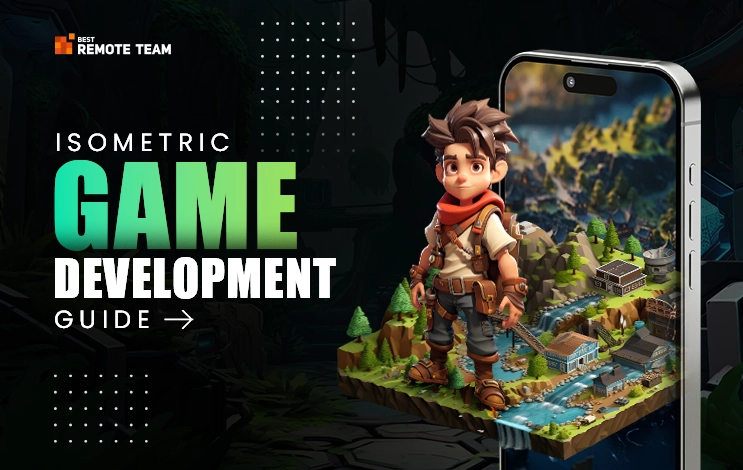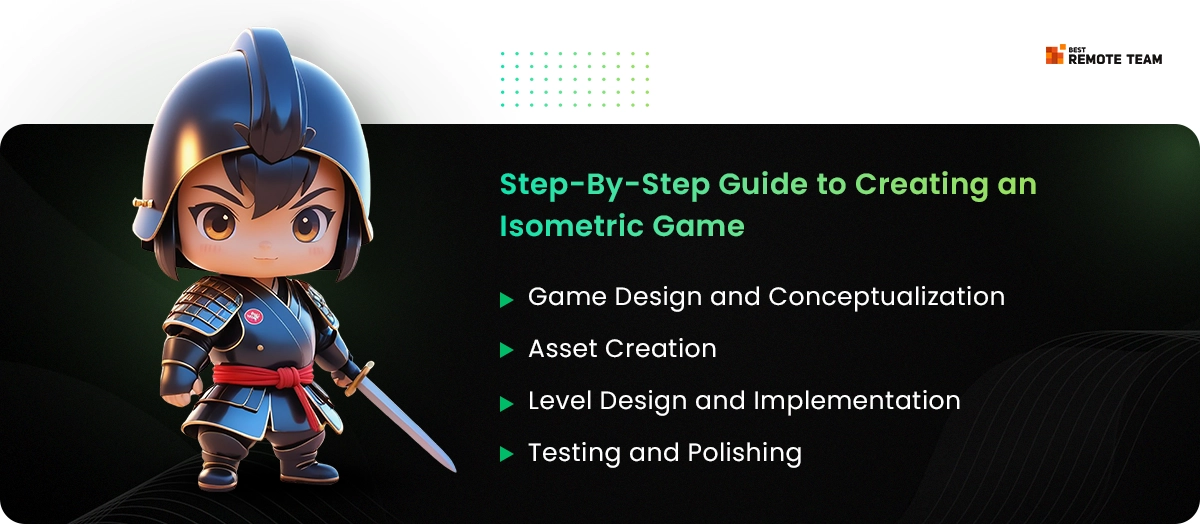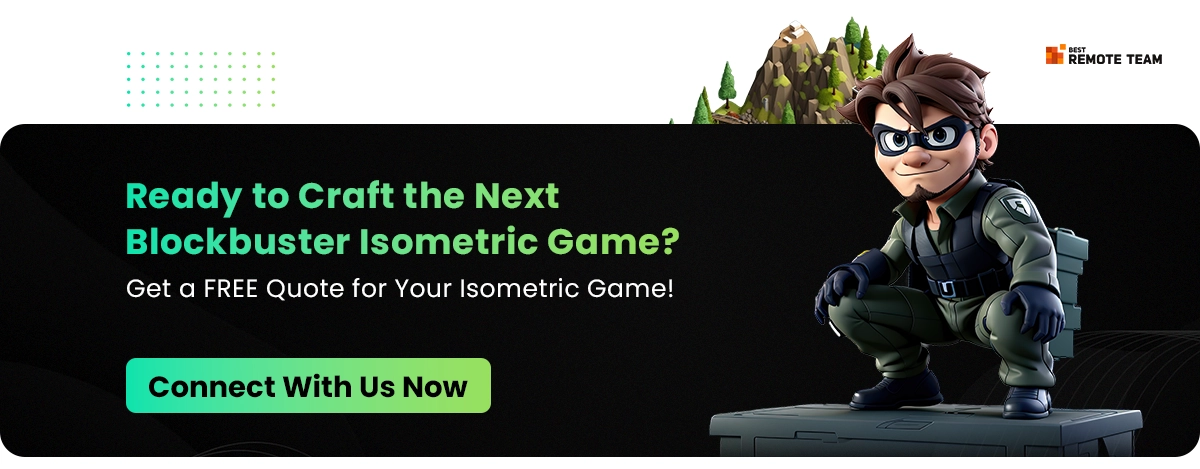Top 4 Games with Isometric Perspective
Isometric games can create the depth and extended immersive experiences that you must offer every person. Here are all the top games that offer an isometric perspective to gamers across genres.
#1. Diablo Series
This is an action-packed game that belongs to the role-playing genre. The dark fantasy game has a brilliant isometric setting with an immersive storytelling experience. You have multiple aspects including dungeons and monsters, all extending a real-like feeling.
#2. XCOM Series
This is a strategy game with intense tactical combat and an isometric game view. The players command the soldiers who are tasked with defending the alien threats on earth. They have used isometric projections to ensure engaging experiences for the gameers.
#3. Cities-Skylines
This is yet another simulation game that uses the isometric projection. They have used this approach to showcase the metropolises. Moreover, you get a model community and city-like experience with this solution. it is an excellent city-building game made with an isometric approach.
#4. Pillars of Eternity
This is a classic game with CRPG features that offer a fantasy world in the digital environment. It has one of the best characterizations. You can easily customize the characters with the isometric game development.
Let’s look at the different stages of isometric game development.
Pre-Production
The pre-production phase or the planning stage is when the idea comes alive. The different eyes that begin visualizing the game dynamics will start defining the genre, overall theme and story for the idea. Hire Unity game developers in the team from this stage to ensure a smooth development process.
This stage is when the entire development team will sit together to draw, create art and 3D models to help understand the vision for the application.
You would also note that several team members come together to share their perspectives of the characters and objects that would be a major part of this world. Let’s look at each of the things that are crucial in the pre-production phase.
#1. Concept and Design
During the pre-production phase, the team will decide on the concept and design for the game application. This is the stage when the visions are translated into actual applications. you will notice that the stakeholders will begin painting the isometric canvas with their understanding and imagination.
The brainstorming will help them define the singular theme and story for the entire game application. They would build a narrative that is close to the player’s heart and needs. this is also the time when they are likely to brainstorm the concept and genre for the particular application.
The conceptual framework becomes the identity of the game application. It also helps when the stakeholders collaborate with the designers to give a visual understanding of their ideas. they can translate the vision into artwork that will later help build 3D models.
Once you have confirmed the art models and types for the isometric game development, you can work on the characters, objects and the background for the gameplay. Make sure to dive deeper into the proportions as well, including the depth and scale. This would help you plan the elements from different angles.
You must also ensure that the entire isometric grid is cohesive and visually captivating.
#2. Gameplay Mechanics
Gameplay mechanics are the core of any game application you develop. It involves the systems and rules that will govern the interaction, thus leading to an immersive experience. When you are crafting the isometric game application, you must ensure the gameplay is engaging and rewarding. You can use a classic mi of exploration and strategy to build the game.
The gameplay depends on the game requirements. For instance, a strategy based game may require a different pace and exploration strategy. similarly, you may need to use the requisite landscape and resources to build this game action.
The characters and their interactions also depend on the gameplay. You might want to weave the special abilities of the character or component into gameplay. You must also guard the movement through the isometric world ensuring proper depth perception. you must also establish the obstacles for the game in the proper manner.
It is equally important to integrate the interactions of the characters with their environment and NCP naturally into the game.
Building the Visual Foundation
Once you have crafted the design and strategy for the game, it is time to create the visuals. This will set the tone for the visual experience your users will enjoy.
You must blend the art, concept art and environment design to get a world that captures the real world and its senses perfectly. You must ensure you get the colour, texture and composition perfect while performing this blend.
Pay attention to minute details, such as the atmosphere and mood you want to establish in your art composition. This would include all aspects of design, including pixel art and drawings. The visuals are the foundation of the game application.
#1. Art Style Selection
Art style selection is again crucial to creating the visuals for the game. It is the art style that can redefine the perception and immersion of the gamer in the virtual world. You can play around with the art styles till you find something that brings out the emotions and elements you wish to convey.
A pixel art combined with a retro appeal can draw a lot of gamers to your play. It can create nostalgia and bring out the distinct elements that house a classic game. Similarly, hand drawn graphics give a distinct element to your app. You can use the rustic charm to build your visuals.
Depending on the type of realism you wish to offer, the depth and overall immersion, you must choose the art type. You can use these types to create a dynamic effect. There is the 3D modelling art type that offers extensive depth and realism.
You can create stunning visuals with dynamic lighting that brings alive the characters and environments in the virtual environment.
Choosing the style is an important part of crafting the visuals. The art style should be in sync with the users, their theme needs and tone. You must also ensure that the art style resonates with the game genre.
#2. Creating Isometric Assets
Once you have decided on the style, it will help if you begin designing the isometric assets. You must blend the artistic vision with technical aspects to ensure the style and perspective match.
You can break down the entire creation into smaller and doable steps. For instance, break down the visual creation of the character into the different body parts. This would help you animate them separately. Once done, you can assemble them for customization and animation.
Similarly, you can work on developing the objects and environmental elements for the isometric game app. You can use various techniques, such as layering and shading that can extend the depth and dimension you want.
If you are using pixel art format, you can use dithering and colour blending to smoothen the transitions. In case of hand drawn components, you might resort to linework or shading.
Each composition calls for a unique design style and isometric development approach.
#3. Grids & Tile Sets
Isometric grids and tiles provide the foundation needed to create an efficient design. You can use them to design functional isometric games. They help with construction of the sets and characters.
The grid will offer the designer a reference to create objects and characters. They would help your developers ensure proper scale and perspective while designing the characters. You can ensure a seamless transition between two tiles when working with grids. This will ensure that the elements fit in perfectly with the isometric designs.
Let’s understand tiles, which are modular elements that can help improve the developer’s efficiency. They can easily use tiles to assemble their components into complex environments. You can use the tiles to represent the different visual elements, such as landscapes, objects and features.
Tiles set the pace for iteration and exploration in design. You can easily refine the layouts with these designs. The grids and tiles can help the developers create an immersive reality with greater effectiveness.
Production
Once you have conceptualized and designed the isometric game, it is time to work on the production stage. This includes working on the animation, designing the interactions and coding the elements.
The programming and implementation of the product can take longer. You can use the iterative approach to create these elements.
#1. Art and Animation
This is the first step into the production phase for the Unity game development agency. You will need to combine the artistic abilities with the digital tools available to create the game dynamics. You might want to use tools like Photoshop, Aseprite and Tiled to create the isometric game assets.
These tools can help you bring robust features and versatility into the application. You must hire Unity 3D game developers from India to ensure the best utilization of tools in developing the apps.
Each app has its unique ability and strength that you must know before proceeding with them. for instance, Photoshop allows you to use the layers and grids that can help create a precise environment. Similarly, you can create unique blends with the brush elements on this software.
Tiled allows you to create exceptional maps and environments. There are isometric grids that help you assemble complex environments easily. you can also work on iterative development with this tool.
You can use a sprite sheet to animate the characters. You can easily breathe some life into the characters with this method. It is also a great way to join the different parts of the character to create more fluid moments.
#2. Programming and Implementation
You need to work on coding the different characters and elements within the isometric game. You must choose the ideal game engine for game development. Unity and Unreal engine are great options that come with a range of tools and resources.
They use isometric rendering and physics to help create immersive environments. You can also use custom engines developed using C# or C++. These custom engines are extremely flexible and extend greater control to the developers.
Once you have chosen the engine and programming language for the game development, your focus shifts towards creating the core mechanics. You must look at the character movement and interactions while planning the coding. Use the right algorithms and collision detection to ensure you are driving the components properly.
Lastly, to create a more real-like experience you must plan on adding the essential sounds and music. This will give the gameplay depth and immersion. Moreover, the game engines can also provide built-in audio tools to manage the sound. You can use dynamic audio systems to create apt responses for the actions and events.
Your choice of coding language, engine and sound effects will play an essential role in ensuring captivating experiences for the users.
Step-by-step Guide to Building an Isometric Game
We have defined the different elements and approaches that are crucial to building an isometric game. Let’s look at all the steps you must follow to build the game.
Step -1 Game Design and Conceptualization
The first step is to create a design and define the concept of the isometric game. The theme, story and overall mechanics should be defined properly. You should work on the narratives, the interactions and the theme in the virtual environment.
You can describe the core mechanics and the strategy for the game. You must identify the genre that best identifies the isometric game you are planning, and align it to the perspective of the game.
This initial work will help you plan the characters, visuals and art style for the game app you are planning.
Step -2 Asset Creation
The next step in isometric game development is to create the assets. This is a multi-step process that requires aesthetic understanding. You must define the perspective as well for the game.
The first step to asset creation involves designing the isometric assets. This includes the characters, objects and environments for the game. You can use multiple software tools and solutions to pan this out.
Next step is to define the animation for the characters. You can use the frame-by-frame animation to get this right. You must ensure the animation approach is in sync with the isometric perspective you have planned.
Lastly, you must work on creating the sound effects for the isometric application. You can use Audacity or similar software to record and use the sound.
Step -3 Level Design and Implementation
It is crucial to design the levels within the isometric world while keeping the depth perception real. You might need to create engaging experiences for the users while building the different levels.
You can use the isometric grids to craft the perfect environment with the apt consistency. Similarly, the grid will also help plan the object placement. You can use depth perception to create the dimensions in the different levels. It can also be used to create elevation changes and shadows within the game.
The pathfinding systems will help you create the character and its movements. You can also improve the design for interactive elements and obstacles within the game with these systems.
Lastly, make sure to test and iterate each component that you have designed. Get feedback from real users to understand the friction and usability issues.
Step -4 Testing and Polishing
The last step is to test the game for quality and immersive experiences. You must conduct detailed unit and functionality tests. You can use the testing approaches to determine the bugs, balance issues and other aspects.
You can create logs of the tests, and keep improving the application. You can also use the test results to refine the animations and interactions. Lastly, you can also fine-tune the animation for fluid and responsive components.
Conclusion
Isometric game development can increase engagement for the game, thus boosting experiences and conversions. You must ensure proper conceptualizing and asset creation. You should also define the visual style and art type for the game design before coding them.
Each stage plays a pivotal role in creating the assets, proceeding with modular approaches and iterative development. There are several online tutorials and forums that can help you plan your first isometric game development.
If you have an idea, you must start defining the concept and theme for the isometric game. With more players engaging in these games, it is the right time to produce your application.
Best Remote Team can help you with the custom Unity game development services and coders that translate your concept into an immersive application. Our team can support you with the best team and tools along with the process and approach.







